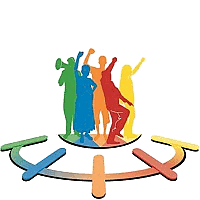Is it time to put the World Bank and IMF on trial?

Consider 25 charges of wrongdoing to South Africa
Patrick Bond (Daily Maverick) 11 October 2023
Should the World Bank and International Monetary Fund be subject to a people’s tribunal at the Lynnwood, Pretoria office? Hundreds of protesters are anticipated on the morning of October 12, drawn from the Fight Inequality Alliance, SA Federation of Trade Unions, #YouthArise, Black Consciousness Movement, Abahlali baseMjondolo/Freedom Park and other progressive community groups, social movements, trade unions and political parties.
Having carefully studied the Bank and IMF for more than 40 years, I’ve come to the conclusion that such tribunals are necessary, if only because these institutions are impervious to introspection and reform. Such is the disgust for their record that across the world, poor and working people are pining for an alternative, and at Bank offices across the world, more thousands are protesting against the Bank/IMF Annual Meetings that are underway in Marrakesh, Morocco this week.
(As a desired alternative, hype over Dilma Rousseff now leading the New Development Bank of the Brazil-Russia-India-China-South Africa bloc and over potential ‘de-dollarisation’ through its local-currency, is one reflection, even if in reality the BRICS Bank has performed terribly in a South Africa where its parastatal and state borrowers are in such a sorry state.)
Reparations are due South African society and environment for specific crimes committed by the World Bank and IMF during South Africa’s apartheid era, as well as since 1994. In the first category are five harms:
the Bank’s $100 million in loans to Eskom for building coal-fired power plants from 1951–67, but in the process supplying only white people and businesses with electricity, for which all South Africans paid the bill;
the Bank’s point-blank refusal to heed a United Nations General Assembly instruction in 1966 not to lend to apartheid South Africa;
IMF apartheid-supporting loans of more than $2 billion between the Soweto uprising in 1976 and 1983, when the U.S. Congress finally prohibited lending to Pretoria;
Bank loans for Lesotho dams, which were widely acknowledged to ‘sanctions-bust’ apartheid South Africa in 1986, via a London trust; and
IMF advice to Pretoria in 1991 to impose the regressive Value Added Tax, in opposition to which 3.5 million people went on a two-day stayaway.
Subsequently, lending and neoliberal policy advice by the Bretton Woods twins after 1994 have included:
an $850 million IMF loan to South Africa in December 1993 that carried conditions of wage restraint and cuts in the budget deficit, which in turn hampered the transition to democracy;
Bank promotion of ‘market-oriented’ land reform in 1993-94, which established such onerous conditions (similar to the failed Zimbabwe policy) that instead of 30 percent land redistribution as mandated in the RDP, less than 1 percent of good land was redistributed;
the Bank’s endorsement of bank-centered housing policy in August 1994, with recommendations for lowering housing subsidies, leading to smaller (and badly constructed) houses further from jobs and community amenities, than during apartheid;
Bank design of South African infrastructure policy in November 1994, which provided the rural and urban poor with only pit latrines, no electricity connections, inadequate roads, and communal taps instead of house or yard taps;
the Bank’s insistence that corrupt Lesotho Highlands Development Authority boss Masupha Sole stay in his job in December 1994 (six years after he began taking bribes from international construction companies), in a threatening letter to the Lesotho government;
the Bank’s promotion of water cutoffs for those unable to afford payments, opposition to a free ‘lifeline’ water supply, and recommendations against irrigation subsidies for black South Africans in October 1995, within a government water-pricing policy in which the Bank claimed (in its 1999 Country Assistance Review) to play an ‘instrumental’ role;
the Bank’s conservative role in the Lund Commission in 1996, which recommended a 44 percent cut in the monthly grant to impoverished, dependent children from R135 per month to R75;
the Bank’s participation in the failed ‘Growth, Employment and Redistribution’ GEAR policy in June 1996, through contributing both two staff economists and its economic model;
the Bank and IMF’s consistent message to South African workers that their wages are too high and that unemployment can only be cured through ‘labour flexibility’;
the Bank’s role, including research support and encouragement of municipal privatization, in Egoli 2002, the plan to privatize and commercialize most Johannesburg municipal services;
the Bank’s promotion of carbon markets, especially the Clean Development Mechanism scheme at Africa’s largest landfill, Bisasar Road in Durban, which by all accounts failed since the Bank not only reversed a 1994 ANC promise to the (black) community that the dump would be closed, but the price of the carbon credits collapsed in the 2010s to the point the project was unviable as an emissions trading pilot;
the Bank’s repeated commitments to invest, through its subsidiary, the International Finance Corporation (IFC), in privatized infrastructure, housing securities for high-income families, for-profit ‘managed health care’ schemes, and the soon-bankrupt U.S.-owned Dominos Pizza franchise;
a $150 million debt/equity commitment to Lonmin at Marikana, which the IFC bragged was the ‘largest investment to date in Sub-Saharan Africa,’ but which contributed to financial conditions whereby the firm refused to pay a living wage or build 5000 promised houses (only three were built), leading to labour and social unrest, and then the 2012 massacre of 34 striking mineworkers;
the $3.75 billion loan from the Bank to Eskom for building Medupi in 2010, even though from early 2008 it was widely known that Hitachi had corrupted the African National Congress through Chancellor House ‘success fee’, a bribe prosecuted under the U.S. Foreign Corrupt Practices Act in 2015 but which the Bank chose to ignore that year (even when pressed to comment by the Democratic Alliance);
the Bank’s pro-austerity research function in 2014, which led to a re-estimation – using extremely dubious methodologies – of the South African Gini Coefficient (from 0.78 down to 0.59), with the message that the SA state was, since 1994, effectively tackling inequality and hence should not spend more on social programmes;
the IFC’s 2016 investment of $107 million in Net1 (i.e. 22% ownership) which codified the firm’s extremely aggressive predatory activities, degenerating into such extreme abuse that its subsidiary Cash Paymaster Services was sued for corruption and went into receivership in 2020 owing the SA Social Security Agency $100 million, a process which – in its 2022-26 SA Country Partnership Framework assessment of prior objectives in ‘financial inclusion’ – the Bank celebrated as ‘mostly achieved’;
the IFC’s 2019 $2 million financing for Transnet to set up a Liquefied Natural Gas plant in Richards Bay, in spite of such gas being 85 times more potent than CO2 as a greenhouse gas over a 20-year period;
repeated 2020-22 loans by the IMF and Bank to South Africa of more than $5 billion, for ‘Covid relief’ – in spite of widespread procurement corruption within the health ministry, the state’s need for local-currency (not hard-currency) finance given nearly all new expenses (e.g. the Social Relief of Distress grant) were non-import related and could be paid for in Rand, and structural-adjustment conditionality that by October 2020 caused Treasury to reimpose fiscal austerity;
the Bank’s $500 million Just Energy Transition Partnership loan for decarbonising the Komati plant in late 2022, even though Eskom has announced an intention to convert the defunct coal-fired power plant to gas (far more damaging than CO2), likely drawn from northern Mozambique’s ‘Blood Methane’ in a conflict zone (6000 deaths, one million people displaced) in which the Bank also invests, and even though no local consultation with workers and communities was done by the Bank and Eskom; and
the consistent failure of Bank and IMF ‘structural adjustment programs’ in Southern Africa since the 1980s and the stubborn refusal by the Bank and IMF to substantively cancel debt owed by our impoverished neighbors.
The Bank and IMF have witnessed various reform strategies from the inside: to ‘green’ them with natural capital accounting; to shift from Women-in-Development to Gender-and-Development; to improve consultation with civil society; to promote a Post-Washington Consensus; and to give poor countries a higher voting share. All have conclusively failed.
Needed now are new institutions, but the first step is clearing the old deadwood out of the way – and that requires understanding the enormous damage they have done, and refusing to repay Odious Debt (like Eskom’s corrupt Medupi loans). The Bank can now even be taken to court without the old canard of ‘diplomatic immunity,’ because in 2019, that privilege was stripped away by the U.S. Supreme Court.
From a People’s Tribunal, to demands for reparations, to tort cases filed by civil society, to a “World Bank Bonds Boycott” by investors (originally called for by South African poet Dennis Brutus in 2000, at a Washington, DC protest attended by 30,000 and promoted by the SA Council of Churches), to bankruptcy and receivership – the Bank’s long-overdue closure would be an enormous relief.
DOCUMENTATION:
https://www.counterpunch.org/2023/10/06/the-imf-and-world-bank-talk-good-governance-but-walk-with-state-capturers/
https://www.counterpunch.org/2023/04/14/incoming-world-bank-president-ajay-bangas-predatory-finance-background-threatens-even-more-prolific-bank-poverty-creation/
https://www.counterpunch.org/2022/10/18/in-south-africa-resistance-rises-to-the-world-banks-climate-killing-mega-projects/
https://www.counterpunch.org/2019/01/16/jim-yong-kims-mixed-messages-to-the-world-bank-and-the-world/
https://www.counterpunch.org/2018/02/05/new-evidence-of-africas-systematic-looting-from-an-increasingly-schizophrenic-world-bank/
https://www.counterpunch.org/2016/02/12/world-bank-punches-south-africas-poor-by-ignoring-the-rich/
https://www.counterpunch.org/2014/11/18/the-world-bank-blinks/
https://www.counterpunch.org/2014/10/10/the-world-versus-bank-seen-from-south-africa/
https://www.counterpunch.org/2012/09/05/world-banks-jim-yong-kim-comes-to-south-africa/
https://www.counterpunch.org/2012/05/29/the-world-bank-and-the-green-economy/
https://www.counterpunch.org/2012/04/16/why-jim-kim-should-resign-from-the-world-bank/
https://www.counterpunch.org/2011/04/25/the-banksters-and-the-climate-fund/
https://www.counterpunch.org/2011/05/31/the-world-bank-s-africa-strategy/
https://www.counterpunch.org/2010/04/14/the-bank-loan-that-could-break-south-africa-s-back/
https://www.counterpunch.org/2006/03/08/wolfowitz-s-anti-corruption-hoax-at-the-world-bank/
https://www.counterpunch.org/2005/03/23/on-wolfowitz-s-world-bank/
https://www.greenleft.org.au/content/world-bankimfwto-fix-it-or-nix-it
https://www.dailymaverick.co.za/article/2023-10-12-time-to-put-world-bank-imf-on-trial-consider-25-charges-in-sa/
Back
Patrick Bond directs the University of Johannesburg Centre for Social Change.
|
|

Links Search |



